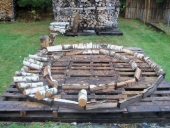


Solar Station Construction Plans by Ben Peterson -- ebook
will be released to subscribers in:
soon!







![Filename: CastSegmentRiser.jpg
Description: [Thumbnail for CastSegmentRiser.jpg]](/t/26161/a/9726/CastSegmentRiser.jpg)
![Filename: CastSegmentRiserSection.jpg
Description: [Thumbnail for CastSegmentRiserSection.jpg]](/t/26161/a/9727/CastSegmentRiserSection.jpg)
Feel free to point out my mistakes, I will view it as a learning opportunity. It's a pity it doesn't work where spelling is concerned 




Alistair Warburton wrote:
Just a thought ! Am I bonkers or might this fly?
find religion! church
kiva! hyvä! iloinen! pikkumaatila
get stung! beehives
be hospitable! host-a-hive
be antisocial! facespace




Success has a Thousand Fathers , Failure is an Orphan
LOOK AT THE " SIMILAR THREADS " BELOW !




![Filename: RiserForm.jpg
Description: [Thumbnail for RiserForm.jpg]](/t/26161/a/9758/RiserForm.jpg)
![Filename: CastSegmentRiseBT.jpg
Description: [Thumbnail for CastSegmentRiseBT.jpg]](/t/26161/a/9759/CastSegmentRiseBT.jpg)
Feel free to point out my mistakes, I will view it as a learning opportunity. It's a pity it doesn't work where spelling is concerned 














 For the Craft!
For the Craft!
Success has a Thousand Fathers , Failure is an Orphan
LOOK AT THE " SIMILAR THREADS " BELOW !




Feel free to point out my mistakes, I will view it as a learning opportunity. It's a pity it doesn't work where spelling is concerned 





find religion! church
kiva! hyvä! iloinen! pikkumaatila
get stung! beehives
be hospitable! host-a-hive
be antisocial! facespace














Success has a Thousand Fathers , Failure is an Orphan
LOOK AT THE " SIMILAR THREADS " BELOW !










Success has a Thousand Fathers , Failure is an Orphan
LOOK AT THE " SIMILAR THREADS " BELOW !





Hans Albert Quistorff, LMT projects on permies Hans Massage Qberry Farm magnet therapy gmail hquistorff
 4
4





Oh shoot, was that my out loud voice?!? O.o
Thanks for listening to my hair-brained ideas, now have a blast picking them apart! I have a habbit of over thinking EVERYTHING I do! C.Ray





C.Ray Gill wrote:I cast foundry furnaces quite often, and have a 26 guage core that is a slip form. I have a vice grip welded (behind the hinge pin) to the ends of the slip form.
Using the slip form core means that I end up with an (almost) perfectly smooth joint between the "doughnuts" in my furnace to keep from causing turbulence in the flame path. I cast "doughnuts" almost exactly like V1 in Chip Friedline's drawing above (minus the taper, of course).
FWIW, and I have no idea if this will help on an RMH but it seems in my pea brain that this would be an advantage in the Rocket to create more draft in the combustion chimney, I wrap 3/8" vinyl tubing on the outside of the slip form after I expand it, barber pole style, to create a vortex effect around the crucible. I know that there is no crucible in an RMH, but a vortex is a vortex, and creating more draft creates more draft...
some of what I'm up to: http://www.permies.com/t/34620/projects/acre










Success has a Thousand Fathers , Failure is an Orphan
LOOK AT THE " SIMILAR THREADS " BELOW !







Oh shoot, was that my out loud voice?!? O.o
Thanks for listening to my hair-brained ideas, now have a blast picking them apart! I have a habbit of over thinking EVERYTHING I do! C.Ray










Success has a Thousand Fathers , Failure is an Orphan
LOOK AT THE " SIMILAR THREADS " BELOW !





|
I see you eyeballing the tiny ad's pie
Homestead Pigs Course
https://permies.com/wiki/365748/Homestead-Pigs
|







